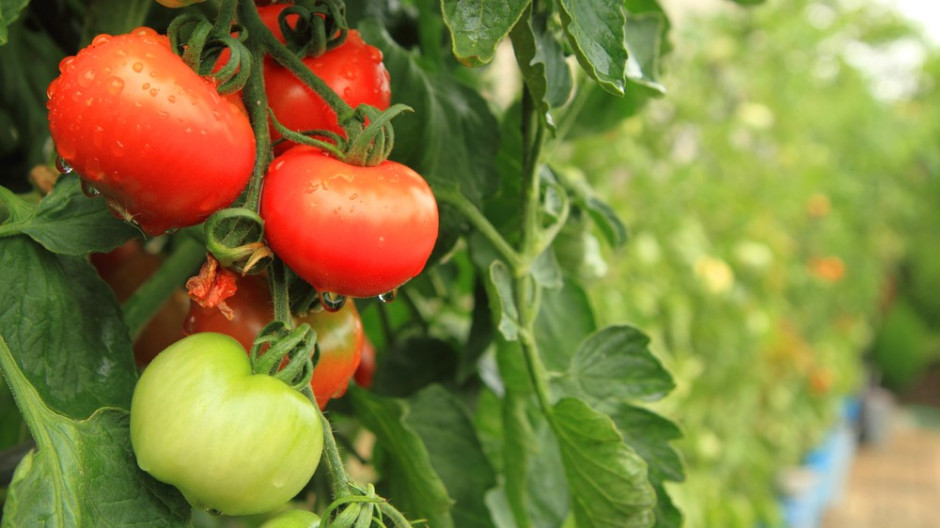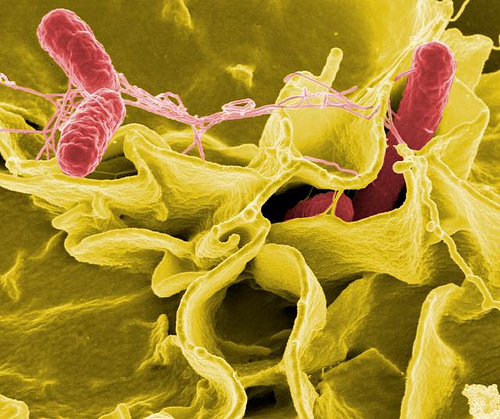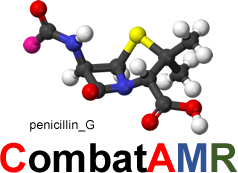>Tomato plant aroma to protect crops

The aroma works by closing pores or 'stomata'. Shutterstock
https://blog.frontiersin.org/2019/03/11/tomato-plant-aroma-to-protect-crops/.
https://www.frontiersin.org/articles/10.3389/fpls.2018.01855/full
11 March, 2019. Original research article: Front. Plant Sci., 18 December 2018 | https://doi.org/10.3389/fpls.2018.01855. Frontiers in Plant Science: Spraying crops with the tomato compound hexenyl butyrate could be a cheap, safe and straightforward means to prevent bacterial infection and improve drought tolerance
Spraying crops with the tomato compound hexenyl butyrate could be a cheap, safe and straightforward means to prevent bacterial infection and improve drought tolerance. Tomato plants emit an aroma in order to resist bacterial attacks. This aroma, or volatile compound, is named hexenyl butyrate (HB), and according to this study it has great potential for protecting various crops from infections and drought. "The application of this compound in fields will allow the industry to have a new natural strategy for improving crop yields: treatments will protect crops from biotic and abiotic stress easily, efficiently and at a low cost," says Purificación Lisón, researcher at the Institute for Plant Molecular and Cellular Biology (IBMCP).
Advances in the identification of genes and enzymes responsible for biosynthesis of volatile compounds have made possible the development of metabolic engineering, enabling improvement of different plant characteristics, including reproduction, the quality of the aroma of the fruits and defense against herbivores (Dudareva and Pichersky, 2008). Chemical communication between plants has also received much attention because of the role of the VOCs as possible inducers of defenses in host plants. The study findings could lead to the use of metabolic engineering for improving the defense of plants against pathogens, by modifying GLV ester biosynthetic genes. The volatile nature of GLV esters would permit these transgenic plants to provide protection in non-transgenic neighboring crops. The aroma works by closing pores or 'stomata' on the underside of leaves. Image: Shutterstock.
>Opinion: Individuals Are Greater Than the Sum of Their Parts
1st March 2019. The study of evolution requires consideration of organisms' microbiomes. https://www.the-scientist.com/critic-at-large/opinion--individuals-are-greater-than-the-sum-of-their-parts-65503.
Itzhak Mizrahi Associate Professor at Ben-Gurion University in Israel. Fotini Kokou is a postdoctoral fellow in his group. It is widely accepted that all animals and plants host diverse microbial communities that are vitally important for their functioning and survival. In many cases, these microbial communities (microbiomes) can be at least partially heritable, being passed from parent to offspring. Thus, when environmental changes occur, we would expect to see alterations not only in hosts' physiology over subsequent generations, but also in their microbiomes.
Husband-and-wife team Eugene Rosenberg and Ilana Zilber-Rosenberg of Tel Aviv University in Israel were the first researchers to propose this concept (FEMS Microbiol Rev, 32:723–35, 2008). A host organism and its resident microbes—the so-called holobiont—functions as a whole on multiple levels, they argued, from the gene and chromosome to the organism's anatomy and physiology, and acts as an independent unit of selection.
The study findings are no doubt just one example of coordination between a host and its microbes. As the evolutionary concept of the hologenome matures, researchers will likely document many more plant and animal communities that evolve with their microbiomes. It remains to be determined whether a microbiome's compositional changes directly affect its host's physiological response to changing environmental conditions. But the hologenome concept will undoubtedly influence our understanding of the evolution and ecology of all organisms.
>Gene-editing tool now being used to develop better antibiotics

January 11, 2019. https://www.nature.com/articles/s41564-018-0327-z
More brilliant innovative thinking from University of Wisconsin–Madison! Jason Peters, a UW–Madison professor of pharmaceutical sciences, and his collaborators at the University of California, San Francisco developed the new system to figure out new weaknesses in the disease-causing pathogens.
The gene-editing tool CRISPR has been repurposed to study which genes are targeted by particular antibiotics. The technique, Mobile-CRISPRi, allows scientists to screen for antibiotic function in a wide range of pathogenic bacteria. Using a form of bacterial sex, known as conjugation, the researchers transferred Mobile-CRISPRi from common laboratory strains into diverse bacteria - allowing researchers to identify how antibiotics inhibit the growth of pathogens.
>Bacteria resistant to antibiotics found in breast milk but Scientists at Helsinki University thinks breast milk can may still help protect babies from dangerous bugs.

The paper, published in the journal Nature Communications, is titled: "Maternal gut and breast milk microbiota affect infant gut antibiotic resistome and mobile genetic elements." Download .pdf
Katariina Parnanen PhD student, University of Helsinki Sep 24, 2018
"We discovered that despite the fact that breast milk has relatively high concentrations of resistance genes, it turns out that babies who have been breastfed for at least six months, have lower abundances of resistance genes compared to babies who aren't breastfed."
Antibiotic resistance has been extensively discussed in the media in recent years, and for a good reason, since antibiotic resistant bacteria pathogens have become increasingly common. Babies don't have fully developed immune systems and antibodies to protect against infections the same way as adults do, so infections caused by resistant bacteria can have serious health effects in infants if treatment fails. Sadly, it has been estimated that more than 200 000 infants die annually due to resistant septic infections. I hope that our paper can give insight into the development of the infant resistome and that we as a scientific community will find possible solutions to the resistance crisis at hand.
Antibiotic resistance has been the focus of our research group for a long time. One day, my colleagues and I started talking about breast milk during a break. I had thought that breast milk was sterile but I found out, to my big surprise, that I was wrong - one drop of breast milk has dozens of bacteria and other microbes. I thought it was fascinating and I began to wonder if there were also antibiotic resistance genes in breast milk.
A few years passed and many new publications about the infant gut resistome came out. All of them told the same story, small babies, even the ones who have never had antibiotics, have even more resistant bacteria than adults, who on average have had several courses of antibiotics during their life. Still, nobody seemed to know where these resistance genes came from. We decided to dig deeper into this problem.
Read more at: https://naturemicrobiologycommunity.nature.com/users/170942-katariina-pa...
>Significant breakthrough by scientists at Manchester University developing the first non-antibiotic drug to successfully treat tuberculosis in animals.
https://www.manchester.ac.uk/discover/news/scientists-develop-new-drug-t...
11.09.2018. One in three people across the world are thought to be infected with the TB, an infectious disease. It is most common in Africa, India and China, but on the rise in the UK with London often described as the TB capital of Europe. About 1.7 million worldwide die from the TB each year and 7.3 million people were diagnosed and treated in 2018, up from the 6.3 million in 2016. A TB vaccine was developed over 100 years ago but for the past six decades doctors have been able to use antibiotics against this killer disease. Now the TB bacteria are increasingly developing drug-resistance.
The breakthrough: Mycobacterium Tuberculosis secretes molecules called Virulence Factors -- the cell's secret weapon -which block out the immune response to the infection, making it difficult to treat. The Manchester team identified one Virulence Factor called MptpB as a suitable target, which when blocked allows white blood cells to kill Mycobacterium Tuberculosis in a more efficient way. The drug works by targeting Mycobacterium tuberculosis' defences rather than the bacteria itself and, importantly, it can also take out its increasingly commonly antibiotic resistant strains. As there is nothing similar in humans the MptpB compound which blocks it is not toxic to the human cells. "Because the bacteria hasn't been threatened directly, it is less likely to develop resistance against this new agent, and this will be a major advantage over current antibiotics, for which bacteria had already become resistant.
The team hope the compound, developed after 10 years of painstaking research, will be trialled on humans within three to four years. The programme is funded by the Medical Research Council (MRC).
Source: Materials provided by University of Manchester

>Review of Evidence on Antimicrobial Resistance and Animal Agriculture in Developing Countries
http://a4nh.cgiar.org/files/2015/06/EoD_Consultancy_June15_Ag_Related_AM...
This report has been produced by the International Livestock Research Institute (ILRI) for Evidence on Demand with the assistance of the UK Department for International Development (DFID) contracted through the Climate, Environment, Infrastructure and Livelihoods Professional Evidence and Applied Knowledge Services (CEIL PEAKS) programme, jointly managed by DAI (which incorporates HTSPE Limited) and IMC Worldwide Limited.
>Inappropriate Antibiotic Prescriptions Highest Among Urgent Care Facilities
-According to a study recently published in JAMA Internal Medicine.
https://jamanetwork.com/journals/jamainternalmedicine/article-abstract/2...
July 27, 2018. Citation: Palms DL, Hicks LA, Bartoces M, et al. Comparison of antibiotic prescribing in retail clinics, urgent care centers, emergency departments, and traditional ambulatory care settings in the United States [published online July 16, 2018]. JAMA Intern Med.doi:10.1001/jamainternmed.2018.1632
The inappropriate prescribing of antibiotics varies among retail clinics, urgent care centers, medical offices, and emergency departments, according to a study recently published in JAMA Internal Medicine.
Antibiotic overprescription was highest among urgent care centers. Of 2.7 million visits to urgent care centers, 1,062,477 (39.0%) visits resulted in the prescription of antibiotics (95% CI, 39.0%-39.1%). Additionally, antibiotics were prescribed in 21,177 (36.4%) of 58,206 visits to retail clinics (95% CI 36.0%-36.8%), 660,450 (13.8%) of 4.8 million visits to emergency departments (95% CI 13.8%-13.8%), and 10,580,312 (7.1%) of 148.5 million visits to medical offices (95% CI 7.1%-7.1%).
Respiratory diagnoses related to inappropriate antibiotic prescription resulted in 441,605 (16%) visits to urgent care facilities, 10,009 (17%) visits to retail clinics, 257,010 (5%) of visits to emergency departments, and 9,203,276 (6%) visits to medical offices. Inappropriate antibiotic prescriptions were highest among urgent care facilities (45.7%), with emergency departments (24.6%), medical offices (17.0%), and retail clinics (14.4%).
The researchers concluded, "There was substantial variability between settings in the percentage of visits at which antibiotics were prescribed among all visits and among visits for antibiotic-inappropriate respiratory diagnoses. These patterns suggest differences in case mix and evidence of antibiotic overuse, especially in urgent care centers …. The finding of the present study that antibiotic prescribing for antibiotic-inappropriate respiratory diagnoses was highest in urgent care centers suggests that unnecessary antibiotic prescribing nationally in all outpatient settings may be higher than the estimated 30%."
>Researchers transform old drug into new fighter against antibiotic resistance.
https://www.cbc.ca/news/canada/hamilton/antibiotic-drug-resistance-solut...
6 March 2017. Pentamidine makes antibiotics effective when combined, McMaster University researcher says…
>Natural actives for wound healing: A review.
https://www.ncbi.nlm.nih.gov/pubmed/29722075
2 May 2018: Format: Abstract. Phytother Res. doi: 10.1002/ptr.6102. [Epub ahead of print] Artem Ataide J1, Caramori Cefali L2, Machado Croisfelt F2, Arruda Martins Shimojo A3, Oliveira-Nascimento L4, Gava Mazzola P4.
Nature has been a source of medicinal treatments for thousands of years, with the use of plants as prototypes for drug development and for the extraction of active compounds. Skin injuries occur regularly in everyday life, and the human skin has the ability to promote repair spontaneously under healthy conditions. However, some intrinsic and external factors may interfere with skin's natural ability, leading to non-healing lesions and chronic wounds, which directly affect health and quality of life. Thus, attention should be given to this health problem, using an appropriated management when necessary. In this scenario, phytotherapy may be an option for cutaneous wound treatment, although further high-quality studies are needed to firmly establish the clinical efficacy of plants. This article reviews traditionally used natural actives for wound healing, highlighting their characteristics and mode of action
PMID: 29722075

>High levels of antibiotic resistance found worldwide, new surveillance data shows
https://www.who.int/mediacentre/news/releases/2018/antibiotic-resistance...
WHO News release 29 .01.2018
First Release of Surveillance Data on antibiotic resistance reveals high levels of resistance to a number of serious bacterial infections in both high- and low-income countries. WHO's new Global Antimicrobial Surveillance System (GLASS), launched in October 2015, reveals widespread occurrence of antibiotic resistance among 500 000 people with suspected bacterial infections across 22 countries.
The most commonly reported resistant bacteria were Escherichia coli, Klebsiella pneumoniae, Staphylococcus aureus, and Streptococcus pneumoniae, followed by Salmonella spp. The system does not include data on resistance of Mycobacterium tuberculosis, which causes tuberculosis (TB), as WHO has been tracking it since 1994 and providing annual updates in the Global tuberculosis report.
Among patients with suspected bloodstream infection, the proportion that had bacteria resistant to at least one of the most commonly used antibiotics ranged tremendously between different countries – from zero to 82%. Resistance to penicillin – the medicine used for decades worldwide to treat pneumonia – ranged from zero to 51% among reporting countries. And between 8% to 65% of E. coli associated with urinary tract infections presented resistance to ciprofloxacin, an antibiotic commonly used to treat this condition.
"The report confirms the serious situation of antibiotic resistance worldwide Some of the world's most common – and potentially most dangerous – infections are proving drug-resistant" ,says Dr Marc Sprenger, director of WHO's Antimicrobial Resistance Secretariat. "And most worrying of all, pathogens don't respect national borders. That's why WHO is encouraging all countries to set up good surveillance systems for detecting drug resistance that can provide data to this global system."
To date, 52 countries (25 high-income, 20 middle-income and 7 low-income countries) are enrolled in WHO's Global Antimicrobial Surveillance System. For the first report, 40 countries provided information about their national surveillance systems and 22 countries also provided data on levels of antibiotic resistance.
"The report is a vital first step towards improving our understanding of the extent of antimicrobial resistance. Surveillance is in its infancy, but it is vital to develop it if we are to anticipate and tackle one of the biggest threats to global public health," says Dr Carmem Pessoa-Silva, who coordinates the new surveillance system at WHO. GLASS will help estimate disease burden, plan diagnostic and treatment services, monitor the effectiveness of control interventions, and design effective treatment regimens to address and prevent future resistance.
Data presented in this first GLASS report vary widely in quality and completeness. Some countries face major challenges in building their national surveillance systems, including a lack of personnel, funds and infrastructure. GLASS is helping to standardize the way that countries collect data and enable a more complete picture about antimicrobial resistance patterns and trends.
NB: All data produced by GLASS is available free online and will be updated regularly.
>Resistance Fighter.
https://www.the-scientist.com/profile/resistance-fighter-35388
Stuart Levy has spent a lifetime studying mechanisms of antibiotic resistance and crusading to abolish the use of antibiotics in animal feed.
>High or Low Doses - which is better?
http://science.sciencemag.org/content/352/6287/758.full
Evolutionary biologists are challenging old dogmas about the way antibiotics should be used. Combined with the resistant microbes that have emerged more recently in hospitals and the wider community, this means that in many infections, a few resistant bacteria may be present from the start, Read says. The key issue is not keeping resistance from developing—it's stopping its spread. This is why high doses of antibiotics may backfire: Resistance usually comes with a "fitness cost" that limits growth. A bacterium may have to expend extra energy to pump out an antibiotic, for instance. High doses of antibiotics will kill susceptible bacteria rapidly, leaving resistant ones without any competition—a phenomenon known as competitive release - and giving them the upper hand. With lower doses, in contrast, resistant bacteria would have to compete with susceptible bacteria, and would remain a minority. An antibiotic given this way simply holds the bacteria in check: The immune system—which seems able to kill resistant and susceptible bacteria equally well—then mops up the infection.

